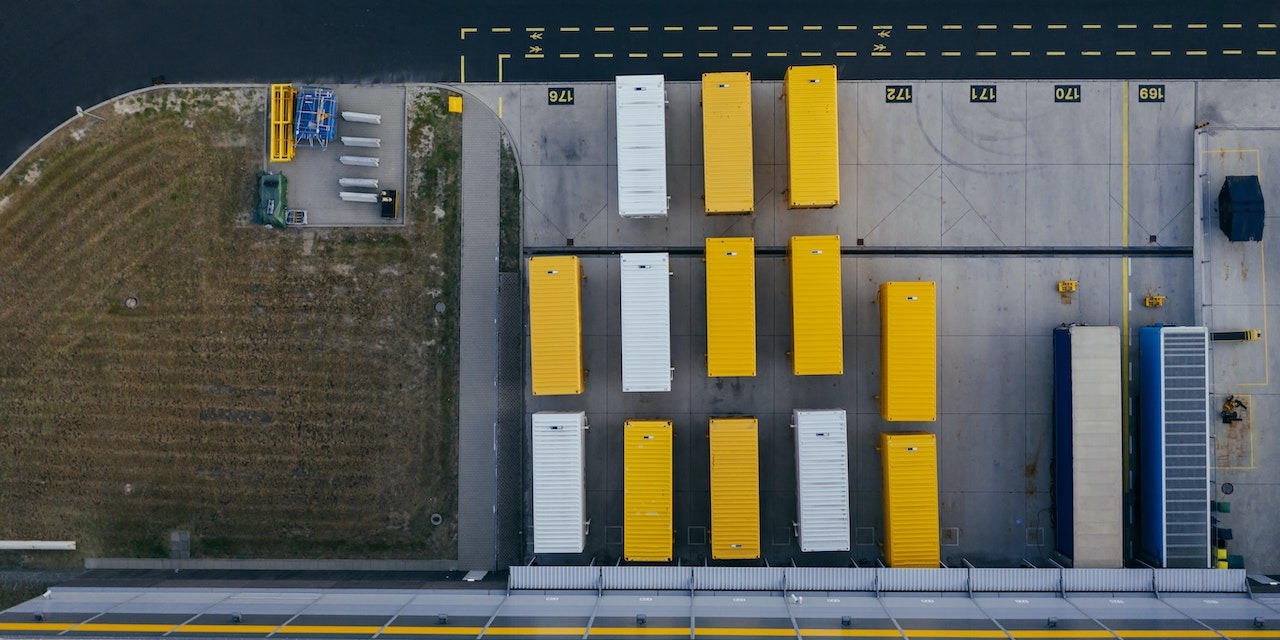In order to answer your request, we are obligated to process the data given above. Sometimes, however, we would like to use them for slightly different purposes, such as statistical data or informing you about our new products and services.We promise that we will use the given information for communication purposes only. We also remind you that you can unsubscribe from our mailing at any time (see Privacy Policy).
Globalisation has significantly influenced the development of international trade. The increase in trade at the end of the 1980s, so much bigger than the rate of world GDP growth, was the consequence of globalisation and political changes.
With the dynamic increase in the volume of international trade in goods, significant structural changes took place, both in the commodity structure and in the geographical area for developing countries. There was a dynamic increase in the exchange of goods in the processing industry.
In the last 30 years, this increase was almost nine-fold. This means that the new trade flows are mainly processed goods of industrial origin. It also connects to business to business models and global integration. The process of globalisation has redefined international trade, the blurring of borders, and the flow of information have made it sometimes difficult to distinguish between what is a cross-border exchange, what is global trade, and what is happening locally, especially from the point of view of the consumer. Globalisation, as mentioned, is imitation on the part of consumers, standardisation of tastes, and thus demand. This favours intra-industry trade by creating and offering substitutes.
Over time, the market began to react with various changes, adjusting to new circumstances. How is it today? How has the approach to globalisation in international trade changed in the light of recent events? Can all those developing countries develop any more?
Made in China
From the ’80 economic development, when the market became more competitive, producers started looking for cost-reducing solutions, and many other companies transferred their manufacturing to China. It allowed them to manufacture more, and at a lower cost, but at the same time made them totally import-dependent.
Since October 2014, China has become the world's leading economy, not the United States, in terms of GDP measured in purchasing power parity. The determinants of China's development to date have been: cheap labor, exports backed by an undervalued currency, investments, in particular infrastructure spending, huge savings for the population and enterprises (around 50% of GDP), foreign direct investments flowing to China and technology transfer from the West.
The global economy has not experienced such a sharp tightening of protectionist measures for a long time, as has been observed in trade between the US and China since the beginning of 2018. In less than two years, the average duty rate on American imports of goods from China increased from 3 percent. up to 21 percent at the beginning of 2020, and in Chinese imports from the US - from 8 percent up to 21 percent.

The trade war has disrupted global supply chains, particularly in East and Southeast Asia. Decrease the American demand for Chinese products subject to the additional import duty on the US market resulted in a reduction in the supply of semi-finished products from many countries.
The duty imposed by the Americans made Chinese goods relatively more expensive compared to goods imported from other countries. This contributed to an increase in demand for goods from non-sanctioned countries, an increase in their supplies to the USA, and, as a consequence, a reorientation of the geographical directions of American imports. So there was a classic shift in trade flows.
Covid-19 pandemic
The greatest turmoil in the world occurred with the first wave of the pandemic in March and April 2020. Due to the lockdown, not only did some production plants stop but also the demand collapsed, as consumers refrained from buying during the crisis and uncertainty. It has influenced significantly online retailers.
The COVID-19 pandemic has disrupted global value chains. The onset of the pandemic and the freezing of the Chinese economy led to difficulties in the supply of products and components from China, and the lockdown of Western economies - to a slowdown in demand. The consequences of these fluctuations will be felt for many months to come, especially in the form of high transport prices or shortages of components, such as microprocessors. These world trade disruptions have fueled the debate about China's future role in global supply chains.
In 2020, the volume of world trade in goods decreased only by 5.3%. This is clearly less than in April, the forecast of the World Trade Organization assumed in the optimistic scenario, pointing to a decrease of 12.9%. Introduced on a massive scale in the second In quarter, restrictions on the movement of residents contributed to the collapse of the world trade in goods (the volume decreased by 16.2% y / y). The third quarter saw a clear rebound - the volume was only 3.5%. lower than a year ago, and in the fourth quarter it basically reached the level from before the pandemic.
Demand shifts were also accompanied by fluctuations in supply, which resulted, on the one hand, from business closures or a lack of available workers, and, on the other, from producers adjusting to the expected decline in demand. From the second half of 2020, there were also problems with sea transport, which delayed the arrival of products and semi-finished products due to the lack of containers and poor ship placement.
Ecommerce: order what you want from where you want
Let us stop for a moment and consider the genesis of electronic commerce. It is impossible to ignore its direct connection with the effect of globalisation and the unification of markets. How closely are these concepts related to each other? Does what influence globalisation, gives it direction, affect ecommerce in the same way?
What is ecommerce?
Electronic commerce or internet business relates to the sale and buying of goods and services through the Internet, in an online store, and to the transaction of money and information in connection with those transactions. Ecommerce refers largely to the physical sale of goods and services online and can be used as a form of commercial transactions that are facilitated via a website. Unlike the traditional online business model, ecommerce focuses on transactions of goods and services.
Online stores are the most popular form of ecommerce. Activities related to electronic commerce are all activities related to the direct conclusion of commercial transactions and leading to them, with the use of ICT.
The dynamic development of the world wide web, which was initially used only for communication, allowed the first online purchases to be made in 1979. The importance of online stores grew rapidly when the ban on using the Internet for commercial purposes was lifted in the United States in 1992. Ecommerce gained importance around 2000. Suddenly, you can gain access to goods around the world at lower prices, without international travel. Currently, many stores operate exclusively via the Internet, but online stores also have brands with stationary points of sale.

How does globalisation affect ecommerce and online retailers?
Globalisation is credited by many economists to slow the growth of the global poverty rate. In a similar manner, globalisation allowed products and services such as cellphones and airplanes to become widespread across the planet. However, critics of globalisation may be concerned that it may negatively affect certain industry sectors in particular countries and potentially attract competition from international firms.
The basic feature of the Internet and typical online store is its availability 24 hours a day, 7 days a week. This feature is extremely important in international trade because it removes the time zone barrier. Online stores can trade around the clock and the time shift does not play any role here. It should be remembered that the ordering processing of an online store is fully automated and does not require human intervention, therefore the acceptance of the order by the online store is nothing more than generating an automatic e-mail to the customer.

Potential customers of the online store are people with Internet access and using the language in which the customer interface is built (store front-end). In cases where the site is multilingual, or the store has several sites in different languages, the geographic reach of the store is huge and the number of potential customers is in the hundreds of millions. The lack of geographic restrictions results in a greater variety of customers, and thus a greater variety of tastes, interests, and needs.
The Internet is an international medium that in developed countries is already associated with universal access. However, we should remember that a computer network requires an appropriate infrastructure.
How ecommerce is dealing with the challenges of recent years?
The advancing digitisation in the global economy in recent times has forced various companies to master the art of quick adaptation to changing market conditions. Online stores began to spring up like mushrooms, and the COVID-19 pandemic eventually prompted the unconvinced to move some of their businesses online. Some companies, however, did not fully understand that efficient online store and ecommerce is not only a new necessity but above all an extremely important test for companies and brands to deal with business reality, a test they will assess - surprisingly easily adapting to digital everyday life - clients. Many companies understood that in the new reality agile and flexible operation is an opportunity and a key to success and quickly adapted to new tasks and market requirements.
Ecommerce has changed not only the customer. It changed entire companies and international economics: their sales structures, teams, ways of working, planning, and communicating with clients. Some numbers show that many company managers were afraid, saying that ecommerce should have a significant share in total sales.
Over the past few years, the largest market players have developed their market strategies based on ecommerce or in the omnichannel model. They expanded their warehouses, learned inventory management based on product life cycles, tested how to achieve scalability of their businesses and how much lead time can be extended (and shortened).
Articles in this series:
Fulfillment services: a new era of globalization (part I)
Fulfillment services: sell globally, ship locally (part III)





